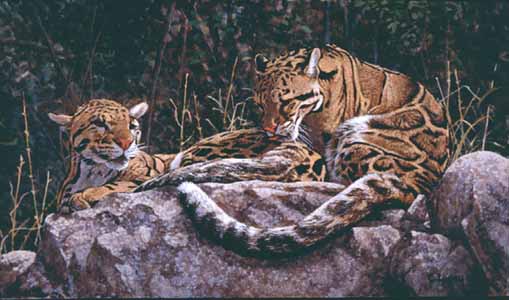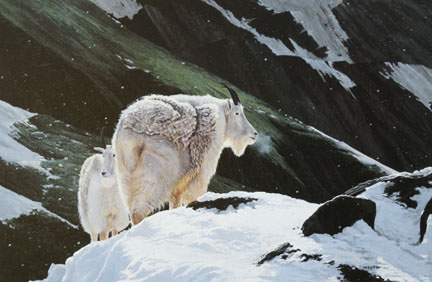

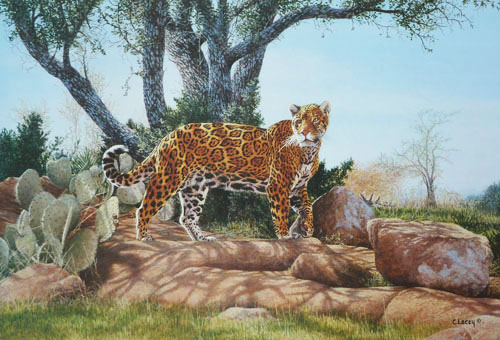
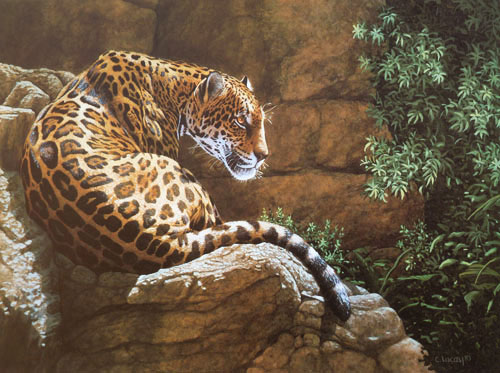
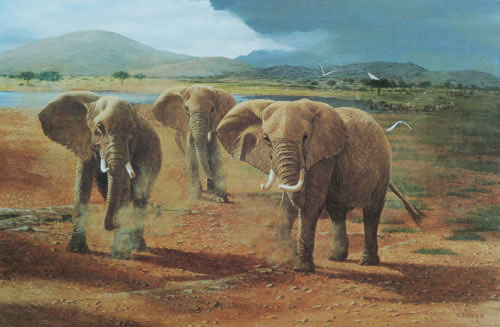

Professional History:
BFA (With studies at the Dayton Art Institute, the University of Dayton, and the School of Fine Arts at Washington University, St. Louis, MO.)
Exhibitions - Numerous awards and juried shows (e.g.: Society of Animal Artists Annual Exhibitions; "Animal Imagery"- St. Hubert's Geralda, NJ; Artworld Western Heritage Annual Art Show, El Cajon, CA; Miniatures Annual Show, Minneapolis, MN; Prestige Art Gallery Annual Show, Toronto, Canada; various other invitational shows around North America)
Publisher – Graystone Press, Nashville, TN (1985-1996): Limited Edition Prints
Books – The Bear on the Moon and Winter White, written by Joanne Ryder, illustrated by Carol Lacey; Morrow Junior Books, NY, NY
Collections - Her work can be found in various public and private collections around the world – and is now available on this website.
Society of Animal Artists, New York, NY
~~~~~~~~~~~~~~~~~~~~~~~~~~~~~~~~~~~~~~~~~~~~~~~~~~~~~~~~~~~
Biography:
Carol's art career actually began when she was about four years old. Her family and teachers strongly encouraged her to do what she always knew she wanted to do anyway: become a professional artist. Attending the Dayton Art Institute on scholarship since grade school, Carol eventually received a scholarship in her senior year of high school to Washington University in St. Louis. There she was fortunate enough to have excellent instruction and learning opportunities which provided her with a solid, well-rounded foundation in drawing and design. Most of her painting teachers were expressionistic, post-modern, and abstract. While she learned something from all of them, Carol freely admits to skipping some classes to find refuge nearby at the famous St. Louis Zoo, observing, studying and drawing the animals. Although she hadn't considered painting wildlife as a career back then, she was fascinated with the wildlife and spent many hours sketching there.
Over the years Lacey has also studied the masters – Rembrandt, Monet, Cassett, Whistler, Wyeth among her favorites – and today's outstanding wildlife artists such as Robert Bateman and Bob Kuhn. She believes she has learned something valuable from each school of thought. Her goal with each painting is to incorporate all the principles and elements she's learned, including effects of light and atmosphere, form, depth, color, balance, perspective, design, composition, etc., into a balanced whole. "Even with all these qualities present," explains Carol, "a successful painting must go beyond the surface to express a depth of character that touches a universal chord somewhere in all of us...spirit, if you will."
For Carol, a workday can easily consist of rising before sunrise to climb above timberline in the Rocky Mountains where she can connect with a group of mountain goats getting a drink at a small lake before taking off for the day. With the proper behavior toward the herd's matriarch she can travel with them for the morning. As a wildlife artist she believes that field trips are essential for depicting nature's creatures honestly and accurately. "Very early on in my career I took pictures and sketched some wild animals at an animal rescue center. I used one of the cougars for a painting and displayed it at a GAME COIN show in Las Vegas one year. An avid hunter came up to me and gently explained that the cougar I had painted was not a wild animal, but a 'zoo animal,' which no knowledgeable hunter would want hanging on his wall. He could tell by the way the skin was hanging from the stomach of the cougar – a cat captured and fed regularly has a different shape and stretch of skin than one who is on his own to gorge when he's lucky enough to snag a good meal, and go real hungry between! I learned very quickly to do more research, get out in the wild, and become more observant.
"There's a lot more to life than just what we're doing for ourselves in our own little corner of the earth. We need to be stewards more of the time. Hopefully through my paintings I can give to others some of what nature gives to me, to help us all address our responsibilities to our natural world. It'll rise or fall depending on whether we care enough to preserve it - it is at our mercy."

